Cooking at camp vs dehydrated backpacking meals
Should you go for convenience or culinary creativity? We compare cooking at camp vs dehydrated camping meals to help you decide what to do on your next adventure.
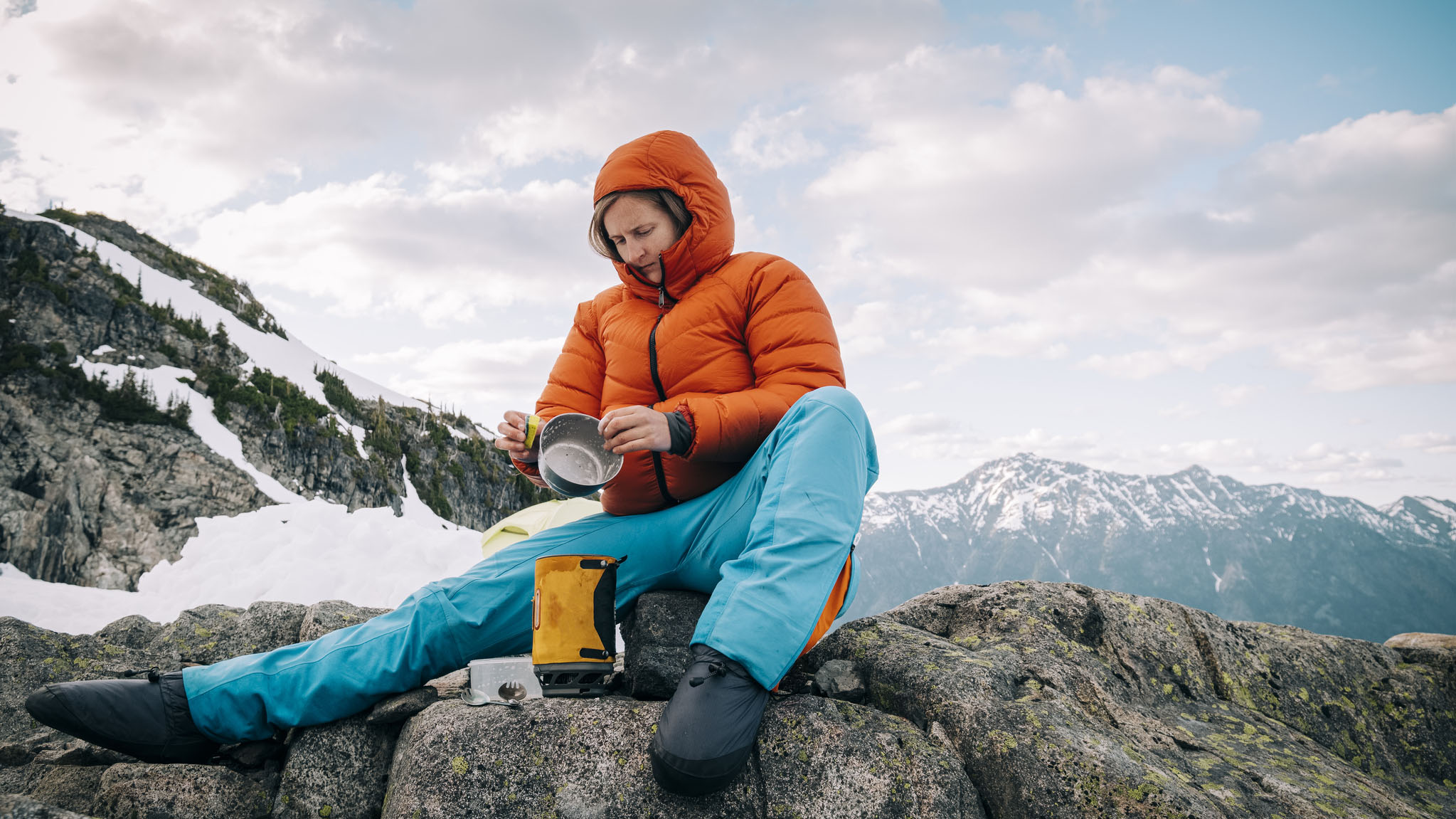
My backpacking trips tend to involve two markedly different approaches to eating. If I’m backpacking alone, I favor dehydrated camping meals (usually Firepot Mac n’ Greens) that I can whip up quickly at the end of the day over my tiny camping stove. I’m always tired and since there’s no one to hang out with, I just want to eat then get into my tent and read my book. The food is ready in minutes, tastes great and fuels me up for the next day.
When I’m backpacking with someone else like my boyfriend, however, meals become a much more extravagant affair. We pack tiny bottles of olive oil and packets of salt and pepper, shop for chopped vegetables and slice chorizo, and cook up a simple but tasty meal on the Trangia. It takes longer, but we enjoy doing it together. There are more dishes to wash, but it feels worth it for the bonding time.
So which is better? If you love your food like I do, you’ll be wondering whether a packet of dry food that promises exotic spices or hearty chili can really replace your own cooking, and if you’re a convenience junkie you may be wondering why anyone would ever bring a fresh vegetable on the trail.
In this article, we compare cooking at camp vs dehydrated camping meals to help you decide what to do on your next adventure.
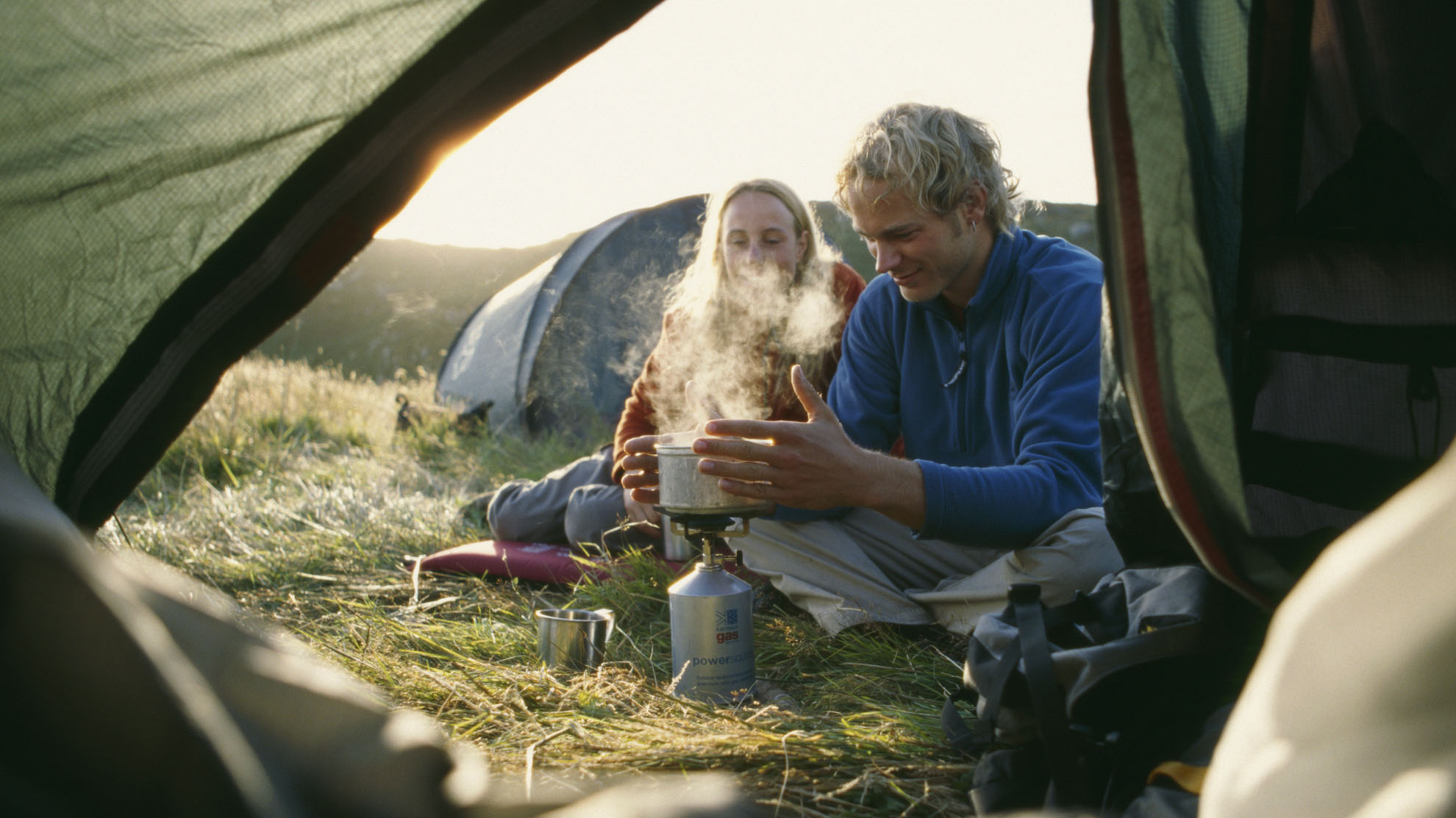
Cooking at camp vs dehydrated meals: weight
If your trip really comes down to ounces on the scale, there’s no question that dehydrated camping meals will be your best option. On its own, a packet of dehydrated Trailtopia Curry weighs only 2.8 ounces, far less than carrying ramen noodles and chopped veggies to add for flavor.
When you’re cooking at camp, you also need to factor in items you’ll need to carry for cooking like oil, a spatula and a pan to saute vegetables that you wouldn’t have to carry with a meal that you simply add boiling water to. Your lightweight backpacking stove may not be sufficient for your skillet, so you’ll need to carry something larger instead, which also takes up more space and weight. A pouch of Peak 2 Refuel Homestyle Chicken & Rice, on the other hand, can easily slide into a full backpack or one of the side pockets and won’t take up nearly as much space as fresh ingredients.
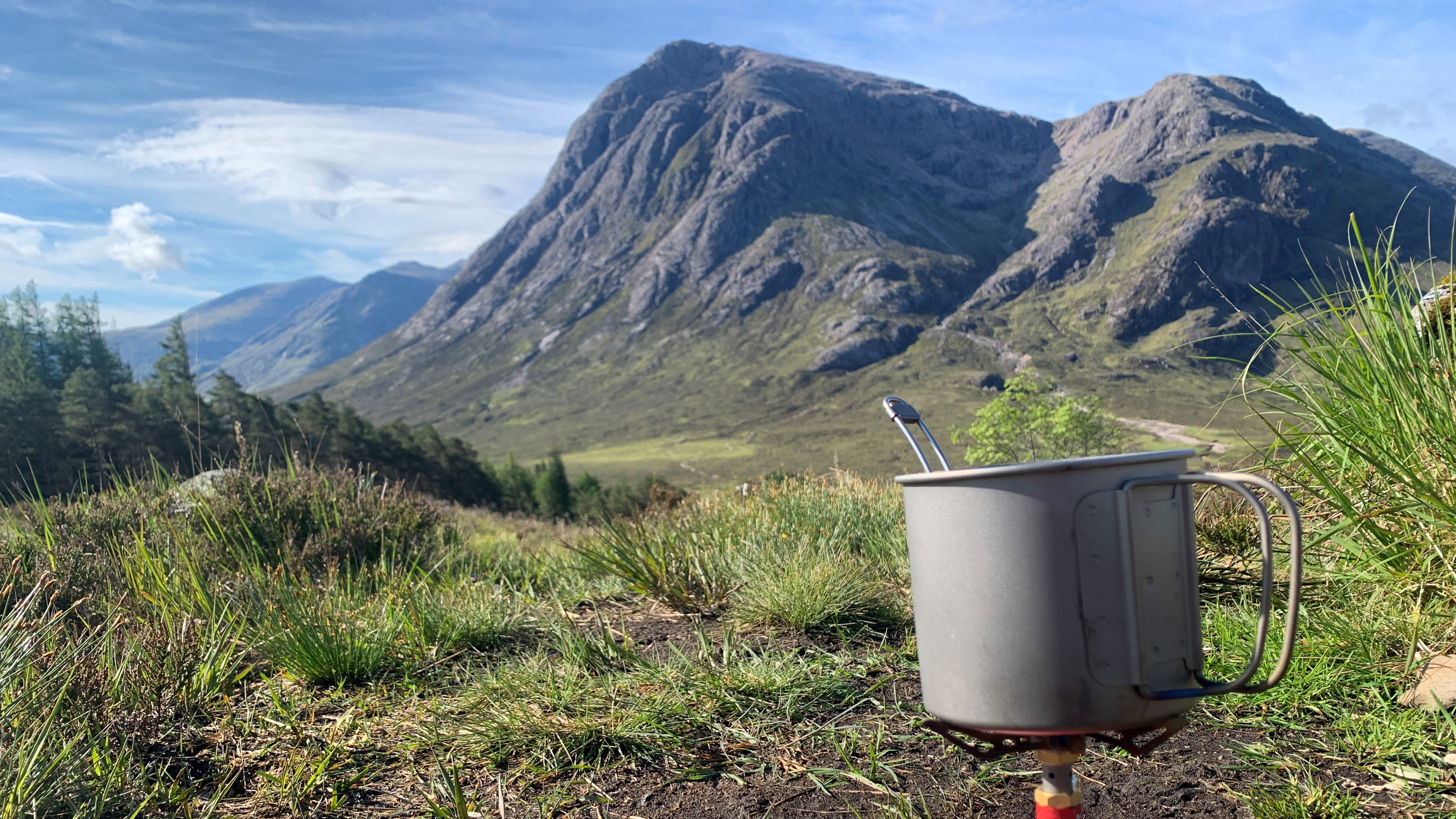
Cooking at camp vs dehydrated meals: perishability
Needless to say, perishability is a big issue when it comes to trying to cook meat and vegetables at camp, and basically if you’re not driving in with a cooler, you can’t really expect to bring much in the way of fresh food (at most, I’ll bring a bag of chopped vegetables and a couple of pieces of fruit for a one-night backpacking trip).
All the latest inspiration, tips and guides to help you plan your next Advnture!
If you’re trying to cook at camp, you’ll be limited to how much fresh food you can bring since it’s likely to go off within a day or so without refrigeration, and you’ll probably end up using meat that is essentially dehydrated anyway, like jerky and salami. Often, if you don’t eat all the food you bought with you, it ends up going to waste when you get home because it’s been marinating in the hot sun.
Meanwhile, freeze-dried camping meals can stay good for years, so there’s no issue about them going off during your trip, even if it’s a thru-hike, and anything you don’t eat can go back in your camping bin when you get home.
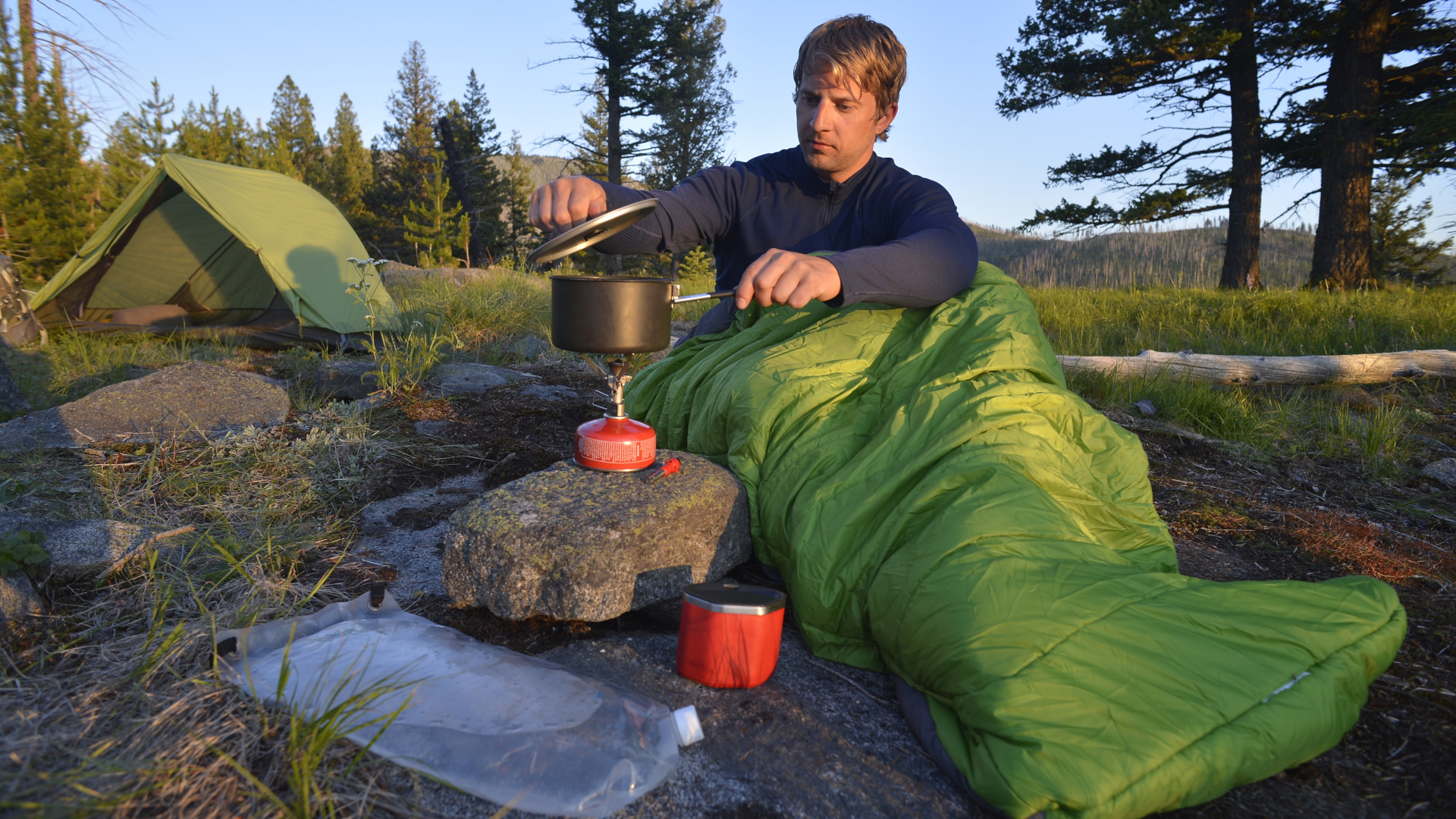
Cooking at camp vs backpacking meals: convenience
Convenience truly isn’t everything, especially when it comes to food, but when you’re backpacking, it really might be. Perhaps you’ve walked 17 miles across a bog, it’s taken hours to find a decent place to pitch your tent and all you want to do is get some calories in your body and crawl into your sleeping bag. The last thing you want to have to do is find your camping knife and start slicing peppers and carrots to go with your rice. Preparing a dehydrated camping meal involves adding the packet to boiling water for the specified number of minutes, so it’s definitely the more convenient method for campers on the move.

Cooking at camp vs backpacking meals: nutrition and taste
It’s easy to think that a freshly cooked meal at camp will have more nutritional value, but dehydrated camping meals really have come a long way. Freeze-dried meals are literally just that – meals that have been prepared, flash-freezed then dehydrated, so as long as the meal you choose was nutritionally rich to begin with, it won’t have lost that value during the freezing process.
Patagonia Provisions Organic Red Bean Chili contains over 40 percent of your recommended daily dietary fiber (which will help you with that backpackers constipation, by the way) while the Park 2 chicken and rice we mentioned earlier contains nearly all of your daily protein and is a decent source of potassium, calcium and iron. Lacking in a lot of fresh fruits and vegetables does mean that a lot of these meals aren’t chock full of vitamins, however, and you’ll be better off with fresh food in that regard, but you should also consider taking vitamin supplements for longer backpacking trips.
Taste is a personal matter for sure, but of the freeze-dried camping meals we’ve tested, quite a few come out more delicious than anything I could whip up by myself. I wouldn’t be carrying eggs and sausage into the backcountry for a breakfast skillet, but with the tasty Mountain House Breakfast Skillet, fortunately I don’t have to and it’s heaps better than my usual oatmeal and trail mix affair.
It all depends a bit on what you’re cooking, but if you haven’t tasted a dehydrated camping meal in 10 years, don’t assume they won’t be as tasty as your home cooking. They might even be better.

Cooking at camp vs dehydrated meals: experience
Sometimes, you’re fastpacking on a long distance trail and you really do just want enough fuel to get you to your destination while carrying as little as possible, but that’s not all backpacking and camping is. Sometimes you’re there just to enjoy a night or two in the outdoors. There’s no rush and you actually want to take your time and relish the whole process of camping.
One of my favorite camping memories this summer was backpacking the length of the Isle of Bute, finding a beautiful spot near the beach and cooking up couscous with fresh veggies and chorizo. The meal was simple but as good as anything we make at home. If you have the time and the inclination, cooking a “real meal” in the wilderness can be a memorable experience to truly savor, whereas adding boiling water to a pouch rarely is.
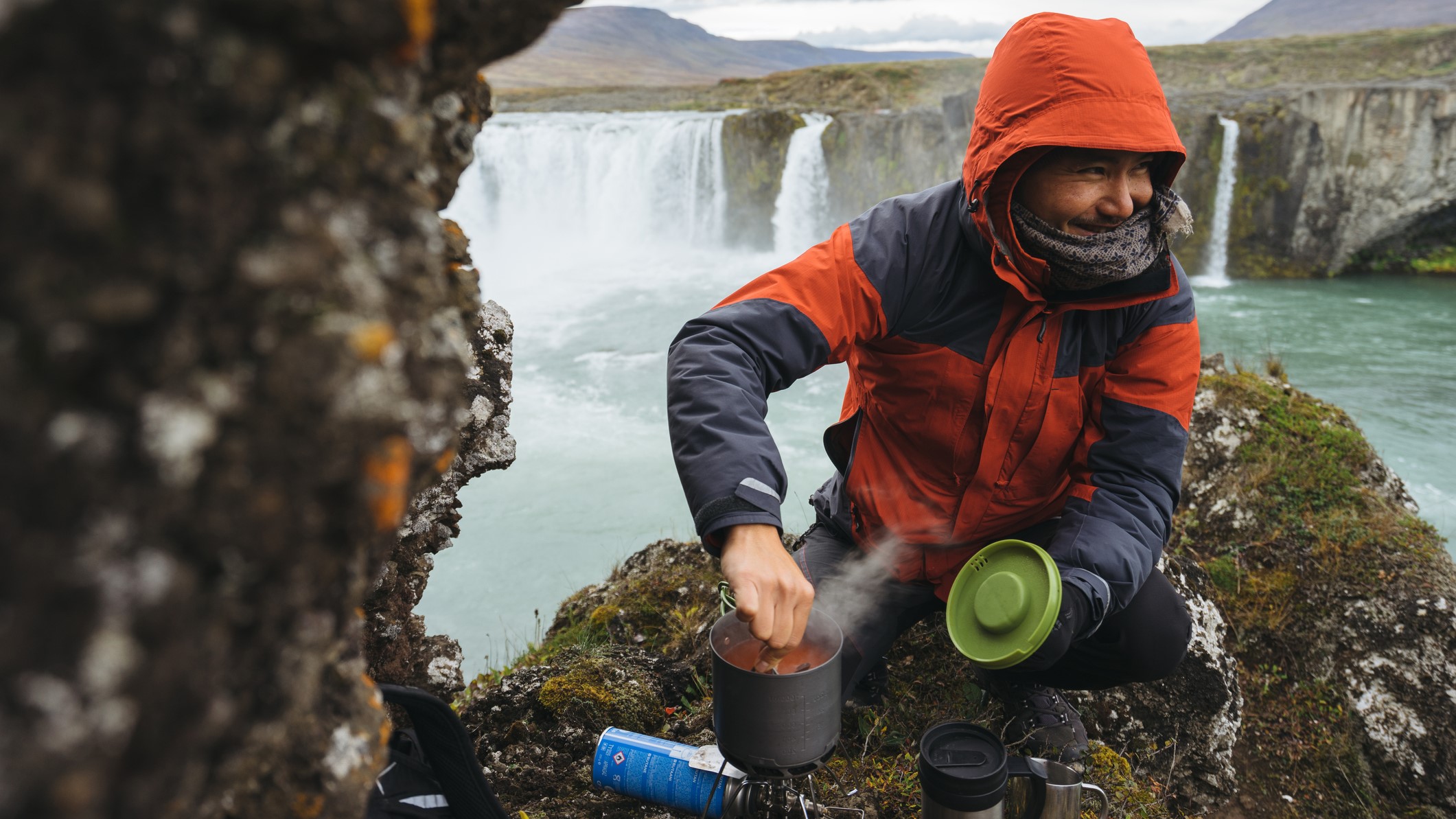
Cooking at camp vs dehydrated meals: price
So far, it might be looking as though dehydrated backpacking meals largely win out, but there’s a cost to these meals getting so good, and that cost comes in actual dollars. Dehydrated camping meals have gotten pricey. Our favorite freeze-dried camping meal in terms of flavor was easily the Stowaway Gourmet Los Pollos Hermanas, but a single pouch comes at an eye-watering $18.95 while a Good to Go Indian Vegetable Korma retails at $8.60 and doesn’t include rice, which is honestly still high enough to make you consider bringing your own vegetables and spices.
You’ll almost certainly save money cooking at camp, while with dehydrated meals you’re paying for extreme convenience.
| Header Cell - Column 0 | Cooking at camp | Dehydrated backpacking meals |
|---|---|---|
| Weight and packability | Heavier, by the time you factor in fresh food, cooking oils, skillets and utensils | As light as 2.8 ounces per meal |
| Perishability | True fresh food won't last long out of the fridge | Can last for years |
| Convenience | Takes more time to organize, prep and cook | Just add water |
| Nutrition and taste | Nutritious and tasty, if you get good ingredients and are a good cook | Surprisingly nutritious and tasy |
| Experience | Cooking at camp can make for a really memorable experience | Not much to write home about |
| Price | Cheap | Pricey |
Cooking at camp vs dehydrated meals: the verdict
If you need your pack to be light and you want a quick and convenient solution to eating at camp, dehydrated backpacking meals are definitely worth considering, especially since they taste so much better than they used to. They come at a high price though, so they’re no good if you’re camping on a budget.
Cooking at camp means carrying heavier ingredients and cooking accessories, and you’re limited in how much perishable food you can reasonably bring, but what you get in return is a more memorable experience and it’s hard to put a price on that. If you did put a price on it, however, it would be cheaper than dehydrated meals.
Ultimately, this one mostly comes down to the trip you’re taking. If you’re in a hurry, dehydrated meals have vastly improved in recent years and shouldn’t be overlooked, even if you consider yourself a gourmet. For a shorter trip and when you’re not in a rush, we still love the whole practice of chopping and cooking a meal from scratch, out in the wild.
Julia Clarke is a staff writer for Advnture.com and the author of the book Restorative Yoga for Beginners. She loves to explore mountains on foot, bike, skis and belay and then recover on the the yoga mat. Julia graduated with a degree in journalism in 2004 and spent eight years working as a radio presenter in Kansas City, Vermont, Boston and New York City before discovering the joys of the Rocky Mountains. She then detoured west to Colorado and enjoyed 11 years teaching yoga in Vail before returning to her hometown of Glasgow, Scotland in 2020 to focus on family and writing.

